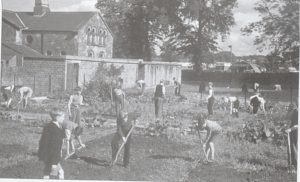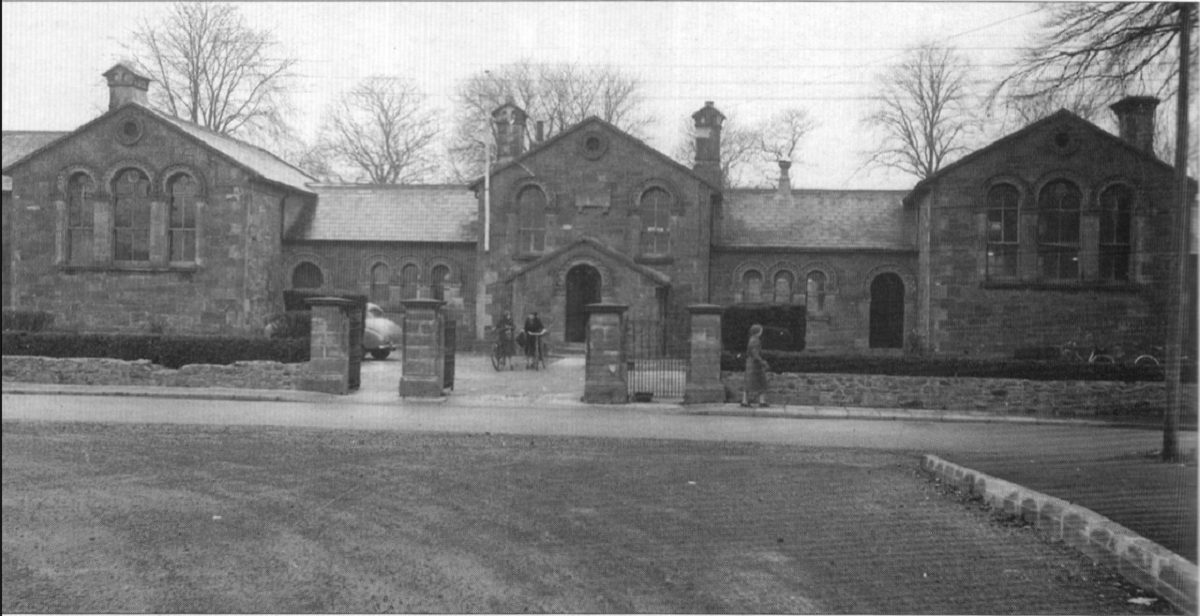Children nowadays are raised with well-structured and tailored learning under the guise of highly-trained and qualified teachers.
But who taught those who teach?
In today’s modern world, teachers receive teaching qualifications through universities or colleges, but, in the 19th century, the solution… wasn’t so easy.
Ireland in the 1800s suffered from a deficit of teachers, and, to rectify this, working schools for aspiring pupils to learn how to teach were established.
One of these schools was built where South West College is now located, thus commencing the site’s 160-year-old association with education in Omagh.
The Irish National Board of Education in 1832 recognised the need for a nationalised schooling system, but there weren’t enough qualified teachers to staff these new schools.
This led to the creation of ‘model schools’ in 1834.
The idea of a ‘model school’ was established to serve the dual purpose of teaching primary school children, while students, known as monitors, were also trained there by qualified teachers, addressing the shortage of qualified educators.
Omagh Model School was one of 30 built across Ireland, with the doors first opening on October 8, 1859.
The model school was designed by a Dublin architect named Fredrick Darley, who was selected by the Board of Education, and paid a salary of £350 a year for his work.

Darley’s design was built on Sedan Avenue where the current South West College building is today, and it costed £2,562 to construct, with an additional £97 spent on furnishings.
His construction plan included a central gable with a porch extension entrance block joined to similar wing blocks, with two short buildings having additional entrance doors.
The window and door openings had sandstone ornamental semi-circular arched heads, presenting a very well-balanced architectural elevation to the front.
A number of stone-built chimney stacks indicated that the classrooms were heated by means of an open fireplace in the early years .
The school complex was enclosed by stone boundary walls at the side and rear.
There were three separate boys, girls and infants playground yards, with toilets and shelters within each respectively.
Originally, the school had metal gates and iron ornamental railings, however, in the 1940s, these were removed to support the war effort.
The students enjoyed a wide variety of lessons that mirrored subjects that are still taught to this day.
The curriculum was quite extensive with classes in: Arithmetic, reading, spelling, writing, composition, grammar, art, geography, history, recitation, handwork, singing, and, in the upper classes, algebra and geometry.
Interestingly, the students also studied hygiene, a practice, thankfully, taught at home today.
Pupils also enjoyed time outside of the classroom, with emphasis on physical exercise and sports during the mid- morning break before they were marched back to class in single file.
However, discipline back in the model school days was a far-cry from the stern talking to or ‘bad note’ in the planner that we see today.
In fact, corporal punishment was exercised through a firm whack of the cane if students misbehaved or failed to complete homework.
Meanwhile, the classroom tables were comprised of heavy oak on ironframes, designed to sit two students.
Perched on top would be with ink wells for the traditional fountain pens.
Classes saw numbers as high as 48 split in the middle between boys on the left, and girls to the right.
By the early 1940s, World War II had taken a grip across the North.
Air raid shelters were constructed within school grounds, and drills became a routine, preparing students for potential bombings.
Thankfully, real bombs never fell on the county town, but child refugees from the Belfast Blitz actually joined the Omagh classes, and were welcomed and integrated with ease.
The great flood of October 18, 1952, saw the pupils of Omagh Model School sent home after only one hour in class due to fears of difficulty getting out of school.
The floods, described in the UH that week as ‘the worst in living memory’, rose past Bell’s Bridge and left residents on Sedan Avenue ‘waist-deep’ in water.
After a century of service, the model school bid farewell on October 23, 1959.
The closure marked the end of an era, but paved the way for a larger, more modern institution in Campsie now known as Omagh County Primary School.
The building on Sedan Avenue was knocked down in 1963 to make way for the Omagh ‘Tech’, and then it was demolished once more in 2004 for the new South West College.
Some of the old buildings may be gone, but the educational legacy of that site lives on in the mechanics, nurses, builders, technicians – and even journalists! – that it has shaped over the decades.







